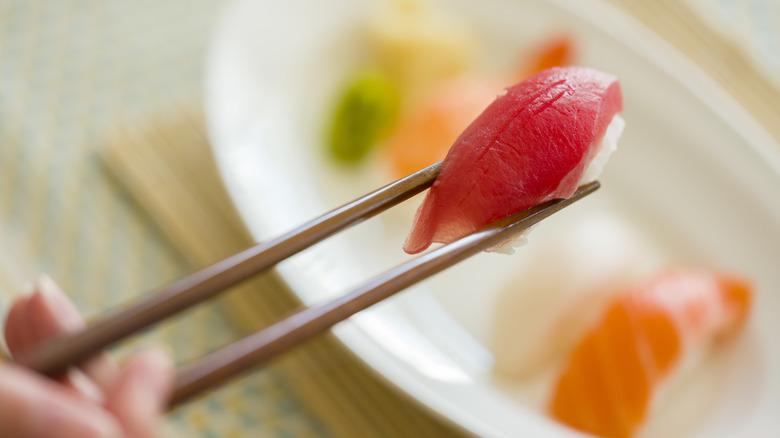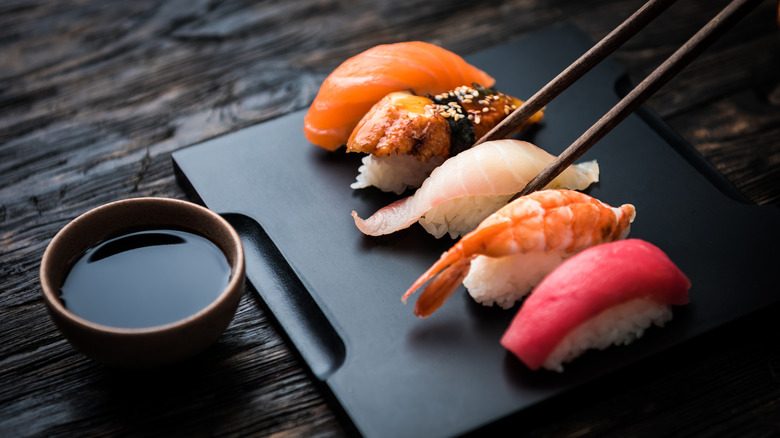The Proper Way To Eat Nigiri Sushi To Ensure The Fish Stands Out
Nigiri sushi is a delicacy in Japan, where it originated, and demands a thoughtful approach when eating it in order to appreciate all of its nuanced flavors. Because crafting authentic nigiri is an art form that takes chefs over a decade to master, we think it's not too much trouble to keep in mind a few basic tips for optimal consumption of a food that, to many, represents the pinnacle of skilled gastronomy.
So instead of biting into it rice-side-down, take a moment to turn the sushi piece sideways (or invert it completely if the fish is adhering nicely to the rice) and let the flesh of the seafood make contact with your tongue first. By doing so, your tastebuds get to savor the umami notes and balance of the fat and flesh in the fish before they are combined with the sweetness of the sticky rice. The easiest way to do this is to eat nigiri sushi with your clean hands, just like it's usually done in Japan. No one will judge you if you prefer using chopsticks, though you might get some side-eye if you fail to observe this next tip.
Go easy on the soy sauce
It's good to get into the habit of inverting your nigiri, because this is also how you should be dipping pieces in soy sauce. Where rice acts as a sponge for the condiment, the fish will only accept a small amount, and this helps maintain the balanced bite of this type of sushi. Some pieces of nigiri are perfectly balanced in flavor already and don't require it. If you're unsure, you can defer to the expertise of the chef that, if you're at the bar, is sitting before you. And if you're on your own, try a plain piece first to experience the fish without it, then dip a second piece to appreciate the difference, and make your own determination.
If you're still worried about overdoing the soy sauce, you could soak a small piece of ginger in it and gently brush it over the fish. With each well-considered bite, you will establish a meaningful connection to the centuries-old tradition of enjoying this artfully crafted dish.

